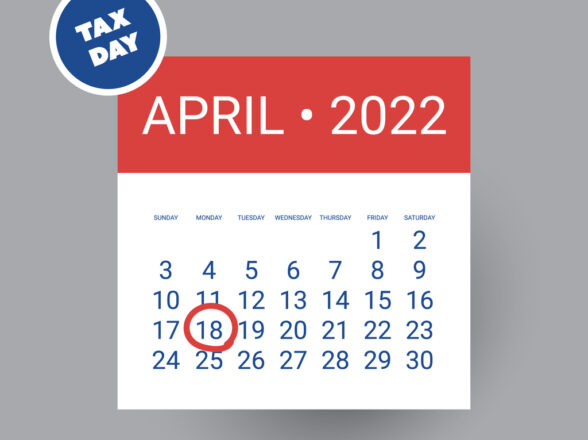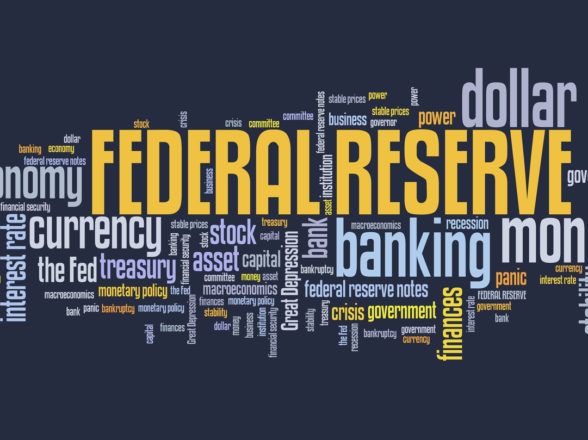Blog
Market Update: It’s Lonely Out There

Hope everyone is having a great summer so far. The typical summer slowdown does not seem to be in effect for us. We are quite busy, but good busy, and for that we are thankful. Since late last year and early this year, we have experienced a marked pickup in folks coming to us looking for answers to this crazy market. Since we take a fairly different approach to managing risk, this environment plays into our hands.
Unfortunately for far too many investors, their advisor is quite grounded in the past, in strategies that worked well for the past several decades, but now look quite antiquated. Bad for them, good for us. But, there are also forces at work today which do not bode well for us and how we put portfolios together. From an investment perspective, it’s a mixed bag to say the least.
Back to the Good Old Days (unfortunately)
2023 has proven many investment pundits wrong. This year started on the heels of a -20-30% decline in the US stock market indexes, and a nearly -20% loss in bonds, so it’s no wonder we saw a chorus of financial professionals that believed the coming year would look equally as bad. With stock markets up solidly so far this year (although it’s far from a healthy rise), anchoring to what just happened has proven to be a costly mistake.
The most encouraging development of 2023 emerged in the first quarter, but has now turned the other way. Through the end of March, markets were continuing to normalize as we noted in our market commentaries of that time. However, since then, we have witnessed a return to the ‘good old days’ of a lopsided market where a handful of super large Tech companies drive all the returns. Let me be clear, this is not a good investment environment for a well-conceived and diversified portfolio.
To illustrate just how warped the returns of the markets are this year, a bit of peeling back the onion is in order. Let’s focus on the S&P 500 index as a barometer of how the average US-based stock is doing. Because this index is ‘market cap weighted‘ in how it is calculated, the largest companies have an outsized impact on how the index performs.
In other words, of the 500 stocks in the S&P 500, the largest companies dwarf the smallest ones, especially when all of the performance in a given year is happening in the big companies. The net result, if one looks at the index blindly, is to believe the US stock market is having an incredibly good year after a disastrous 2022. However, that simply isn’t the case.
A term you might hear or read about in the financial press is something referred to as the “Magnificent 7.” This descriptor, coined by Michael Hartnett of BoA, describes the following stocks: Amazon, Apple, Google, Meta(Facebook) Microsoft, NVIDIA, and Tesla. Together, this 7-stock collection of large, well-known companies is up a mindboggling +107% year-to-date through July 18th! The standard market cap weighted return of the index is up more than +19%, yet a lot of that performance is being skewed upwards due to the returns in just those seven stocks.
The average stock, on the other hand, is up a mere +9.16% when you don’t account for size of the company and you equal-weight all of the stocks there. Although +9-10% is a great return over the midpoint of the year, it’s just half of the index overall. Too, when you lose -20%, like the S&P 500 did last year, mathematically you need approximately +25% to just get back to even. As of this writing, the return from January 1, 2022 is -6% through today. Hard to believe after such a big run in 2023 that investors are still in the red for the past 18 months or so.
In contrast to the first quarter, bonds and alternatives have really gone flat for the past three months, which is not all that unexpected. Strong bull markets tend to suck assets into stocks and away from everything else with this year being no exception. It’s markets like these that challenge the very basis for how to build a good portfolio because in doing the right thing (diversifying) you haven’t been rewarded for that since early March. In fact, you have been punished.
Although we do not anticipate a handful of Tech stocks driving the entire US stock market indefinitely, we must also leave room for this dynamic to play out for far longer than seems reasonable. In the mean time, we will not abandon the prudent construction of our portfolios. The worst thing we could do is to try and chase this outliner of a market, only to find that situation reverts back to a more normal state. Instead, you will continue to see a mix of holdings that we find attractive and believe will make you money.
1/2 of the Answer is Not Good Enough
One of the main reasons I left Merrill Lynch more than 14 years ago to found Infinium was that they never taught us how to sell and reduce risk. Seems fairly simple, right? There are probably times when you want less chips on the table – less risk – when markets are dropping. However, that was not the case in my decade as an advisor there.
That begs the question, “Why don’t the well-known financial houses, who work with everyday investors, ever suggest to sell investments to reduce risk?” Quite simply, they don’t get paid to do so. What you learn as an advisor in one of these big shops is that you don’t collect a fee on cash (or very, very little). Let’s pause for a moment and think about this dynamic – if I am a run-of-the-mill financial advisor who doesn’t get paid to have a client in cash, why would I ever want a client sitting in cash?
Their pay will drop significantly when clients chose to hold cash, so that’s not something they ever want to do – ever. Even though this could very well be the exact right strategy to pursue, these advisors at larger investment companies, in particular, are far more incentivized to keep you in, than to pull you out. People will do what you pay them to do, and the industry, by-and-large, doesn’t pay advisors to have cash in client portfolios.
I see a big problem with this, and turns out, a lot of investors are starting to feel this way, too. Here are Infinium, we see cash as a tactical tool that can work better that many traditional investments when markets are falling. Preserve capital until things look better doesn’t sound like a bad idea to us. When we speak to clients, resoundingly they are in agreement with this approach; imagine that! It’s not easy to make big shifts in a portfolio mix, yet the markets today are making it a necessity, not a ‘nice to have.’ As a firm that takes a very active approach, it can feel like a very lonely place among our peers.
The Investor Isn’t Wrong
But this leads us to the aforementioned other big problem with our competition in the financial services marketplace – they have very little knowledge or skill to be able to navigate a portfolio in both good and bad markets. So their default is, “Mr. or Mrs., why are you worried about one year, think long-term!” We have to laugh at this strategy, because boy, is it an easy thing for the advisor to do; put the onus back on the client.
“It’s you, Mr. or Mrs. Client that isn’t doing the right thing by worrying about your loses, not us over here, sitting on our hands while you portfolio drops in value everyday…” How convenient for them! Seems logical that if you have no financial incentive to raise cash for clients, you never learn how and when to do so. In this scenario, clients are forced to grin and bear it. Clearly, if markets are in an extended downturn – like they were last year – the advisor has failed the client.
We recently had the opportunity to speak with a retired gentleman whom I will refer to as “Robert.” He had just suffered through a -25% loss in his portfolio in 2022, which dropped the value from a $4 million dollar nest egg to just north of $3 million. His advisor had the nerve to tell him, “Robert, we have a 30-year plan for you, why are you so concerned about one year of performance?” Robert’s response was quite frank, “Advisor, I’m 75 years old, I ain’t got 30 years to make it back!” This was both laughable and sad at the same time. A terrible situation for Robert, and an insight into the shortcomings of financial advisors today.
Keep Looking
With 24 years of experience watching markets move, observing and asking ourselves, “Why did that just happen? And what is likely to happen next?” You start to pick up on a few things. One of our most keen observations is that, even some of the best and brightest investment pundits out there continually look at and focus on the wrong stuff. I say this with deep conviction and sincerity. Professionals who are managing billions of dollars often times are completely distracted by situations that actually don’t matter. Strange as this sounds, it’s true.
So ask yourself, if many people who are entrusted with navigating client money through markets are looking in the wrong place for the answers, how likely are they to get it right? Our view is, most of the time, it’s pure luck and coincidence when they do happen upon the move that works.
It’s possible I’m being too cynical here, which is not uncommon for me when it comes to the financial services industry. But we must – we must – look deeply into our value proposition for our clients and ask very hard questions if we are to stay employed. We must challenge ourselves to be better, to figure out the problems, and bring to the table ideas and strategies that really work.
In my view, financial advisors as a whole, fail to deliver to our clients for the fees we charge. This is wrong and it needs to change. I feel confident in my assessment because we see other advisor’s portfolios all the time. Especially today, when markets aren’t just going up in a straight line, it takes more than boilerplate ideas and models to win the game, yet I see very little evidence that advisors are bringing thoughtful and valuable solutions to their clients.
Stay on Your Toes
So, what matters, and what is Infinium doing to combat these industry-wide issues? First, we don’t just sit on a mix – we are actively changing our portfolios to match the environment. This played out in spades for us last year when we significantly reduced risk and also had holdings that were up nicely while most of the traditional building blocks of a portfolio – stock & bonds – fell double-digits.
2022 was a watershed year for us because the markets actually rewarded how we manage money for clients. Do we get every call right, every shift in portfolios? Clearly, the answer to that question is no. We try – believe me – we try! And we are continually asking ourselves, “How to we do better, how do we make better decisions, and chalk up as many wins as we can for our clients?” Two keys to success in managing money are humbleness and curiosity, and we try our best to embrace these traits every day for you.
Finally, successful investors pay attention to only those inputs that really matter. If I can’t use a particular data point to instruct my actions positively, then I shouldn’t consider it in my calculus.
Consider interest rates, for example. We field a lot of questions and speculation around where interest rates are headed and how that could impact the markets. The problem here is, the Federal Reserve has the ultimate authority to decide interest rates from short-term to long-term. It wasn’t a couple decades ago when the Fed was marginally involved in the process, yet today they are everything when it comes to the level of interest rates. This is not a good development.
Market forces – the collective around what prices should be – is a far better arbiter of prevailing rates than a group of folks sitting around a table and deciding. When it comes to this input, it’s probably never been harder to predict. Additionally, if I’m in the business of trying to outsmart other investors on interest rates, then I also need to be right on what the markets’ reaction will be to this data point. It’s easy to see how interest rates plays very little, if any, role in how we manage a portfolio. Just too much guess work that is likely to be wrong more than right.
Coming Soon
In the back half of the year, I will share with you several of the inputs we use to make portfolio decisions, that we firmly believe actually matter and can be predicted to a certain degree. Likewise, the 2nd half of 2023 is a time we have designated to update client financial plans, so please be on the lookout for us to engage many of you in that process.
As always, please feel free to schedule a time with us to chat by clicking this link [Schedule Call], and we hope you enjoy the rest of summer!

























































































